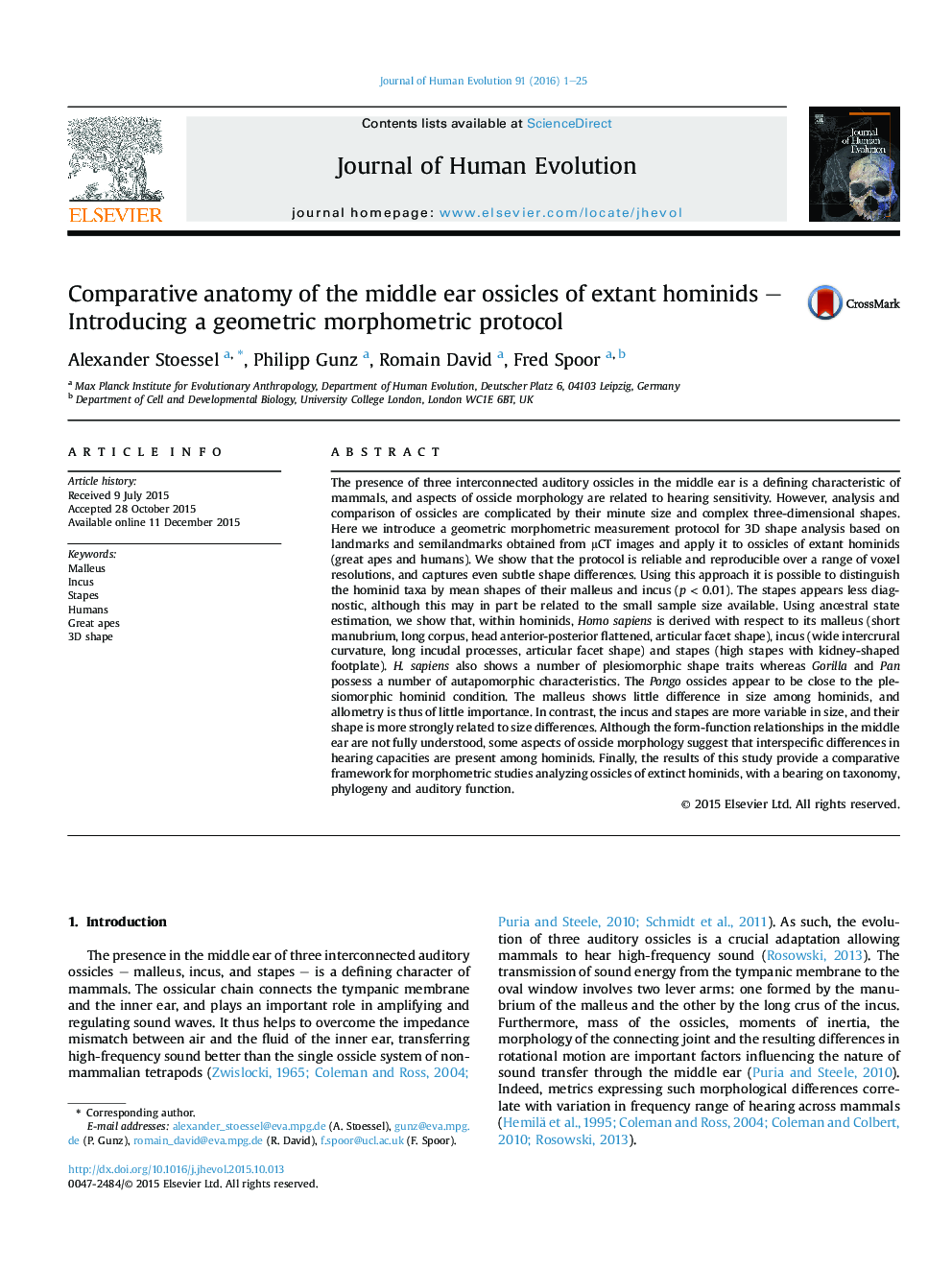| کد مقاله | کد نشریه | سال انتشار | مقاله انگلیسی | نسخه تمام متن |
|---|---|---|---|---|
| 4555867 | 1628158 | 2016 | 25 صفحه PDF | دانلود رایگان |

The presence of three interconnected auditory ossicles in the middle ear is a defining characteristic of mammals, and aspects of ossicle morphology are related to hearing sensitivity. However, analysis and comparison of ossicles are complicated by their minute size and complex three-dimensional shapes. Here we introduce a geometric morphometric measurement protocol for 3D shape analysis based on landmarks and semilandmarks obtained from μCT images and apply it to ossicles of extant hominids (great apes and humans). We show that the protocol is reliable and reproducible over a range of voxel resolutions, and captures even subtle shape differences. Using this approach it is possible to distinguish the hominid taxa by mean shapes of their malleus and incus (p < 0.01). The stapes appears less diagnostic, although this may in part be related to the small sample size available. Using ancestral state estimation, we show that, within hominids, Homo sapiens is derived with respect to its malleus (short manubrium, long corpus, head anterior-posterior flattened, articular facet shape), incus (wide intercrural curvature, long incudal processes, articular facet shape) and stapes (high stapes with kidney-shaped footplate). H. sapiens also shows a number of plesiomorphic shape traits whereas Gorilla and Pan possess a number of autapomorphic characteristics. The Pongo ossicles appear to be close to the plesiomorphic hominid condition. The malleus shows little difference in size among hominids, and allometry is thus of little importance. In contrast, the incus and stapes are more variable in size, and their shape is more strongly related to size differences. Although the form-function relationships in the middle ear are not fully understood, some aspects of ossicle morphology suggest that interspecific differences in hearing capacities are present among hominids. Finally, the results of this study provide a comparative framework for morphometric studies analyzing ossicles of extinct hominids, with a bearing on taxonomy, phylogeny and auditory function.
Journal: Journal of Human Evolution - Volume 91, February 2016, Pages 1–25